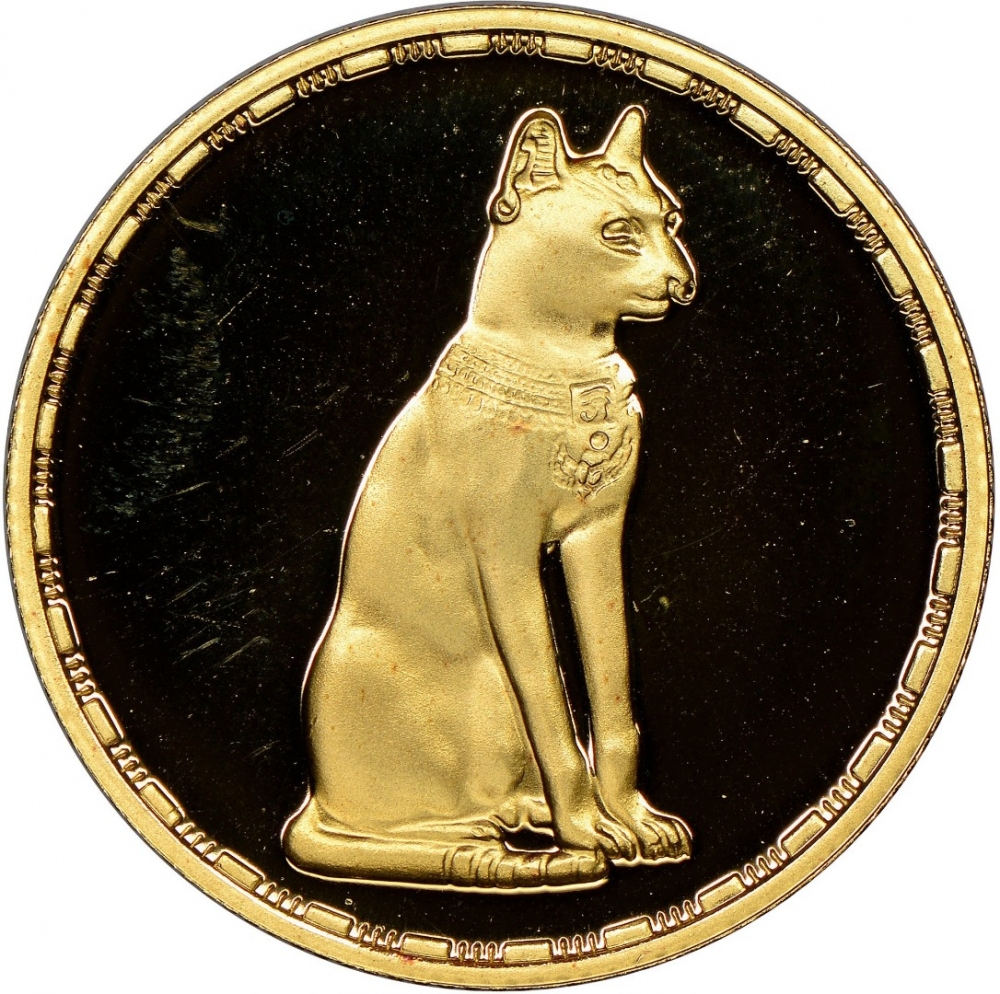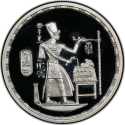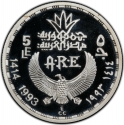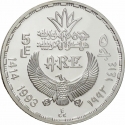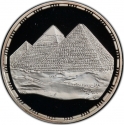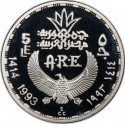You are about to finish your registration. Please check your mailbox (including spam folder). There should be a letter with a confirmation link. Check setting to make sure that your e-mail address is correct.
Send letter againDescription
The Gayer-Anderson Cat is an ancient Egyptian statue of a cat, which dates from the Late Period (around 664–332 BC). It is made of bronze, with gold ornaments.
The sculpture is known as the Gayer-Anderson cat after Major Robert Grenville Gayer-Anderson who, together with Mary Stout Shaw, donated it to the British Museum. The statue is a representation of the female cat deity Bastet. The cat wears jewellery and a protective wadjet amulet. The earrings and nose ring on the statue may not have always belonged to the cat. A scarab appears on the head and a winged scarab is shown on the chest. The statue is 42 cm high and 13 cm wide. A copy of the statue is kept in the Gayer-Anderson Museum, located in Cairo.
Obverse

|
Depicts a full view of the Gayer-Anderson Cat. |
|---|---|
Reverse

|
Stylized state name (Arab Republic of Egypt) divides denomination in Arabic and English and abbreviation of state name (A.R.E.) below, the date in Arabic (Hijri) and Western (Georgian) divides by a vulture with open wings. Engraver's initials (ECC) below. 50 ٥٠ جمهورية مصر العربية |
| Edge |
50 Pounds
Pharaonic Treasure / Ancient Egyptian Art
Gayer-Anderson Cat
Subscribe series
KM# 780
Pharaonic Treasure / Ancient Egyptian Art
Gayer-Anderson Cat
